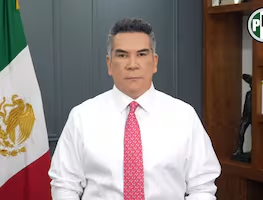Sicarú
is the prototype of a zero-greenhouse-gas-emissions car designed by Mexican scientists from the Research and Advanced Studies Center ( Cinvestav ). The design is based on the use of hydrogen as its main energy source.
The car was developed in the Chemistry Department and it's a proof that the use of alternative sources of energy applied to transport is becoming a new option to avoid the emission of these gasses, which are responsible for climate change.
“It's a transport free from pollutants, there are no carbon dioxide emissions , clean energy is produced, it's a friendly system for the environment, there are no gasses, no noise,” explained Omar Solorza Feria , the project leader.
Sicarú
will work with a hydrogen tank to produce energy, which powers a fuel cell to produce electricity , which is charged through a bank of batteries.
Solorza Feria
explained that the energy generator works when the hydrogen enters the systems, where the hydrogen pressure is regulated, to take oxygen from the air.
Andrés Rodríguez Castellanos
, a member of the Chemistry Department at Cinvesta v, explained that in the future, the car will have another energy source, obtained through solar panels.
Sicarú, which means “the best” or “the most beautiful” in Zapoteco , doesn't have a gearbox , chains, or pulleys as it works through an accelerator .
“The brakes also use all the energy because it's renewable and electromagnetic, so if we want to stop, that inertia moves the motors as a generator and we charge the bank of batteries,” he explained.
The chassis fulfills the proofs established by the transport regulations, is made of aluminum and the car body is made with carbon fiber to make it lighter and more resistant.
Omar Solorza Feria,
from Unión Hidalgo, Oaxaca , explained that this transport will be focused on helping people with disabilities, as its design includes space for a wheelchair .
“The project is focused on what can we do to contribute to knowledge and offer society. We consider that it could be driven around Mexico City's center without an issue,” said the scientist.
gm











